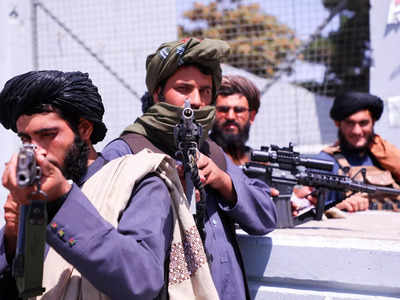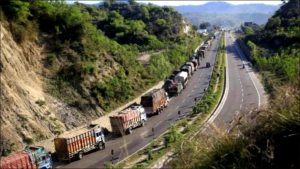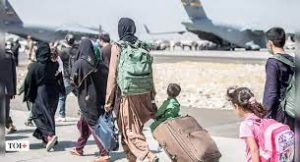
How will the Taliban takeover impact militancy in Kashmir?
Analysts warn that increasing disaffection among young Kashmiris in the region could have serious consequences.
Kashmir is reportedly seeing a surge in foreign militants. Analysts warn that increasing disaffection among young Kashmiris in the region could have serious consequences. On August 31, hours after the last of the US troops left Afghanistan, al-Qaeda hailed the Taliban for its victory in Kabul. In a statement, the militant group called for the “liberation” of Kashmir, Somalia, Yemen, and other “Islamic lands.” The statement sent ripples through New Delhi.
According to official figures, Kashmir is seeing a surge in foreign militants. There are now between 40 and 50 foreign militants, and 11 local militants active in north Kashmir bordering Pakistan, a report by The Hindu stated. This would be the first time in a decade that there are more foreign militants than local ones in the region.
Fearing a new wave of violence, analysts are watching the new geopolitical developments closely to determine how they would impact militancy in the region. “The Taliban takeover will not only impact Kashmir but the whole of South Asia will also be affected,” Shesh Paul Vaid, the former director-general of Jammu and Kashmir Police, told DW. “The Taliban takeover will have a psychological impact on all terrorist groups operating all across the world, including in the Kashmir Valley. There is no denying of the fact that their morale has been boosted,” he said.
‘Kashmiri situation has a momentum of its own’
Vaid argued that organisations like Lashkar-e-Taiba (LeT) have helped the Taliban in taking control of Afghanistan. But he said it remains to be seen whether the Taliban will help them in return. “The first thing the Taliban did after taking over was that they released all terrorists from prisons including those from the ‘Islamic State (IS), LeT and Jaish-e-Mohammed (JeM) … Pakistan’s ISI could use its influence on the Taliban and shift its training camps in Pakistan-administered Kashmir to areas in Afghanistan,” he said, referring to Pakistan’s intelligence service.
Victoria Schofield, an author and historian, has assessed the situation differently. She called the Taliban’s takeover of Afghanistan a “national movement.”
“It’s essentially an Afghan movement and the Kashmiri situation has a momentum of its own which is different,” Schofield, who has researched the Kashmir conflict over the last 35 years, told DW.
“In the old days, you heard about Afghans going to fight and help their Muslim brothers in Kashmir but I don’t see that happening now… it’s not part of the Kashmiri psyche to get muddled up in the universal jihad,” she added.
How has Kashmir militancy changed over the years?
The insurgency in Kashmir, which began in 1989, has undergone several changes in the last three decades.
Most recently, the Indian government scrapped Jammu and Kashmir’s special constitutional status and divided the region into two federally administered territories.
“With these moves came a systematic change in the composition of terrorist organisations,” Vaid said. In the early 1990s, the Jammu and Kashmir Liberation Front called for the independence of Kashmir. In the mid-90s, more radicalized groups like the Hizbul Mujahideen (HM) became prominent, he said.
From 1999 onward, the “infiltration of foreign terrorists started” and “pan-Islamic terrorist organisations LeT and JeM — that was mainly composed of foreign terrorists — took the center stage and started this phenomenon of fidayeen [suicide] attacks,” Vaid told DW.
Another change in militancy, he added, came about in 2014 when the LeT and JeM started recruiting local Kashmiri boys in their ranks.
What are the factors fueling militancy?
The killing of Hizbul commander Burhan Wani in 2016 is seen as a watershed moment in the conflict’s history. Wani was the face of “new militancy,” which went from being covert in the 1990s to becoming more open, Vaid said.
According to Schofield, Wani and the group of new militants would not have been able to develop the cult following around them if it were not for the power of social media.“He had been able to achieve this through the use of social media, which had not been possible two decades previously when the insurgency took off,” she said. “The death of Burhan Wani reactivated the movement because he had become a hero for the youth,” Schofield added.
In addition to the rise of social media, Vaid said a range of other factors — such as unemployment — have pushed young Kashmiris into joining militant organisations.
“A lot of boys are getting radicalised due to the jihadist ideology,” Vaid said. “There is also the sheer thrill of holding a weapon. It gives a sense of power to unemployed youth. He feels important in society.”
Schofield said “disaffection” among youth who have grown up in the restive region could also play a role.
“The older generation of militants is dying out and you have this young group who haven’t experienced the militancy of the early years of insurgency, but who have now taken up the cause,” she said.
Following the abrogation of Jammu and Kashmir’s special status in 2019, a strict security lockdown was imposed in Jammu & Kashmir. Additional troops were deployed across the region, which was already heavily militarised.
“Abrogation of Article 370 has had a tremendous impact. So far in the last two years, the level of violence has gone down and fewer boys are joining terror organisations,” Vaid said.
Schofield said the impact of the abrogation was “very dramatic” because it brought in “more rigorous control by the Indian government.” She said the move made militancy “much more difficult,” but warned that disaffection increased.
In the aftermath of the events of 2019, new militant organisations such as the Resistance Front (TRF) have sprung up. But Schofield said they, too, could end up like their predecessors.
“They are going to be stepping in the footsteps of their forebears. But ultimately they are undoubtedly going to be crushed in the same way as their forebears were because you cannot take on the Indian army,” she said. “It’s a tragedy that so many young people have lost their lives because of this unresolved political issue.”

